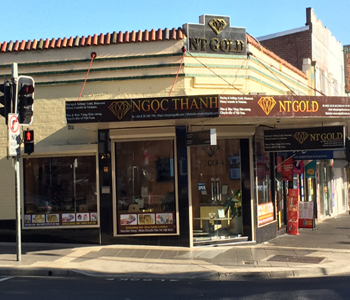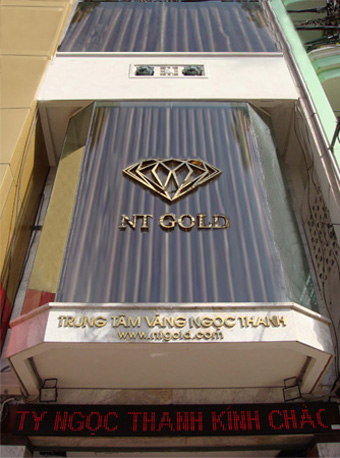Kitco News) – The precious metals market has evolved considerably in recent years with supply and demand factors for gold, silver, and platinum shifting along with geopolitical tensions and industrial trends, but all three continue to serve valuable roles in investment portfolios, according to precious metals analysts at Saxo Bank.
“Precious metals like gold, silver, and platinum may not generate income, but they still hold a distinct place in investment strategies,” the analysts wrote. “Investors continue to turn to them for one reason: they behave differently when markets break down.”
While these assets have served as “hedges against inflation, buffers during geopolitical stress, and anchors in diversified portfolios” for decades, their roles are evolving. “Central banks are still stockpiling gold, reinforcing its role as a reserve asset,” they noted. “Meanwhile, inflation pressures remain uncertain, and demand for silver and platinum is shifting toward industrial use, especially in solar energy and clean tech.”
“In this environment, calling precious metals a ‘safe haven’ isn't enough. The better question is: safe from what, and for how long?”
Saxo Bank sees gold as the benchmark against which all other safe-haven assets are measured.
“Over the centuries, gold has preserved wealth in ways few other assets can match, especially during periods of systemic risk,” the analysts said. “Unlike most commodities, it isn't consumed or depreciated—it's stored. That alone makes it different. Its primary function isn't industrial but monetary.”
Global central banks hold over 36,700 tonnes of gold today, with the reserves of the United States, Germany, and China among the largest. “These tonnes of gold represent about 17% of all the gold ever mined,” they noted. “For many countries, gold reserves are a form of diversification—supporting financial credibility and offering protection against currency volatility or geopolitical shocks.” This is the reason why central bank gold demand remains stable, and often increases during periods of global uncertainty.
“For private investors, gold tends to perform best when real interest rates are low or negative, when fiat currencies are under pressure, or when broader markets sell off,” the analysts wrote. “Its role as a hedge against short-term inflation is mixed, but over longer periods, it has consistently preserved purchasing power during inflationary cycles.”
They cautioned, however, that gold shouldn’t be viewed as a growth asset. “It doesn't produce income, and its price is influenced more by sentiment, real yields, and dollar strength than by supply-demand fundamentals,” they said. “But when stability matters more than return, few assets have a track record as reliable.”
Silver, by contrast, balances safe-haven appeal with concrete industrial applications.
“Silver straddles two investment narratives: store of value and industrial commodity,” the Saxo analysts wrote. “This dual role gives it flexibility—functioning as a partial hedge during market stress while offering upside during periods of economic expansion. That versatility also makes it more complex and more volatile than gold.”
They noted that industrial demand represents over 50% of silver's global usage. “This dynamic makes silver less consistent than gold as a safe haven but more responsive during reflationary periods and growth-driven inflation. It can outperform in risk-on phases but often lags when industrial demand contracts.”
Silver’s lower price per ounce also makes it more accessible for retail investors, while silver ETFs and futures maintain high liquidity for larger or tactical allocations.
“As an inflation hedge, silver tends to respond best when inflation is driven by industrial growth rather than supply shocks,” the analysts said. “Its price movements rarely mirror gold's exactly, positioning it as a complementary asset in diversified portfolios, balancing defensive potential with cyclical upside.”
Platinum, for its part, is highly correlated with high-tech applications.
“Platinum stands out for its rarity and industrial significance,” Saxo Bank said. “It is considerably less abundant than gold or silver, with mining operations predominantly located in South Africa and Russia. This geographic concentration can lead to supply vulnerabilities, although recent assessments suggest that current sanctions on Russian base metals are unlikely to disrupt platinum markets in the near term.”
Unlike gold, platinum prices are driven by demand for its industrial applications. “Approximately 40% of global platinum demand originates from the automotive sector, where it is essential for catalytic converters in internal combustion engine vehicles,” they noted. “Additionally, platinum is utilised in petroleum refining and medical devices and has potential applications in hydrogen fuel cell technologies, though the latter's impact on demand is currently modest due to slower-than-expected adoption rates.”
The platinum market highly volatile, impacted by factors such as substitution between platinum and palladium in automotive manufacturing. “Such shifts can rapidly change demand dynamics and pricing,” the analysts said. “Moreover, the market faces structural challenges, including a projected supply deficit of 848,000 ounces in 2025, driven by constrained mining outputs and low recycling rates.”
But notwithstanding these challenges, platinum still offers speculative opportunities for investors looking for “industrial commodities linked to technological advancements and supply-demand imbalances.”
“While it lacks the traditional monetary role of gold or the dual identity of silver, platinum's position in the industrial sector underscores its potential relevance in diversified investment portfolios,” Saxo Bank said.
The benefits of investing in precious metals include portfolio diversification, hedging against inflation, the lack of counterparty risk, high liquidity and accessibility, and portability, the analysts said.
Some of the drawbacks include the absence of investment income, price volatility, storage and insurance fees, potential tax implications, and behavioural risk as undisciplined investors exacerbate shorter-term market moves.
As for how much investors should allocate to precious metals, Saxo Bank recommends between 2% and 5% of total assets for more conservative portfolios – largely composed of gold – and closer to 10% for balanced or inflation-sensitive portfolios, “particularly during periods of monetary instability or currency depreciation.”
“Gold, silver, and platinum retain relevance, not because they react to every market shift but because they behave differently when it matters most,” the analysts concluded. “Their value lies in how they respond when other assets falter: Gold offers stability when real interest rates fall; silver reflects both inflation and industrial activity; and platinum captures supply-side constraints and evolving technological demand.”
| TIME | |||||
|---|---|---|---|---|---|
| Sydney | Tokyo | Ha Noi | HongKong | LonDon | NewYork |
| Prices By NTGOLD | ||
|---|---|---|
| We Sell | We Buy | |
| 37.5g ABC Luong Bar | ||
| 6,472.90 | 5,962.90 | |
| 1oz ABC Bullion Cast Bar | ||
| 5,387.00 | 4,907.00 | |
| 100g ABC Bullion Bar | ||
| 17,154.00 | 15,654.00 | |
| 1kg ABC Bullion Silver | ||
| 2,016.00 | 1,621.00 | |
Powered by: Ngoc Thanh NTGold
- Online: 271
- Today: 1774
- Total: 5900012














